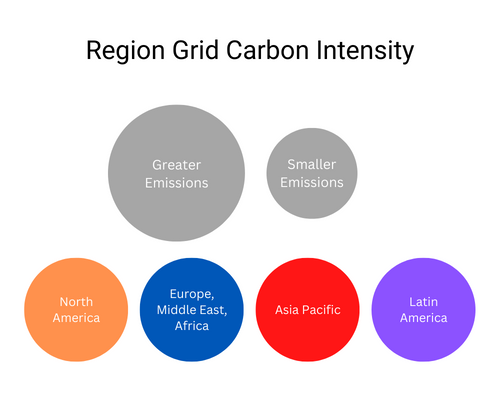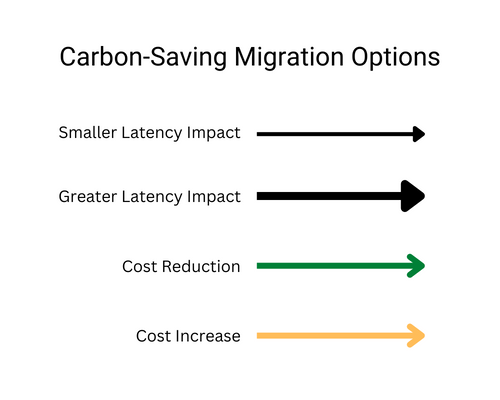Uptime Institute Cloud Carbon Explorer 透露,组织可以通过将工作负载转移到不同地区来减少云碳排放和成本。然而,这种迁移的权衡是延迟的增加。更多信息可在此处找到。
云用户主要根据两个因素选择区域。首先,将应用程序定位到最终用户附近,通过提供更快的内容来改善用户体验。然而,并非所有应用程序都需要如此快速的响应,最终用户通常可以容忍延迟的轻微增加,而不会对其体验产生重大影响。其次,在一个国家/地区提供基于云的服务通常对数据保护有影响,这部分可以通过将数据保存在与其最终用户相同的司法管辖区内来解决。如果没有法律理由将数据保存在司法管辖区内,云用户通常可以将工作负载迁移到附近的地区并减少碳足迹;这种迁移还可以降低成本。
下面的 Cloud Carbon Explorer 地图显示了 AWS、Google Cloud 和 Microsoft Azure 的潜在跨区域工作负载迁移路径。这些工作负载迁移路径可以减少碳足迹,而不会显著影响用户体验,在某些情况下,还可以降低成本。用户可以使用该工具在进行自己更详细的评估之前,探索每个应用程序的延迟、成本和碳的适当折衷。
例如,在下面的 Amazon Web Services Explorer 中,单击 Frankfurt 气泡会显示进出该区域的可行迁移路径。探险家表示,迁移到巴黎,斯德哥尔摩,米兰和伦敦都大大降低了碳和成本,延迟相对较小的增加不到30毫秒。单击任意箭头查看更多详细信息。
对 Uptime Institute 情报有疑问?
填写下面的联系表,我们的情报部门员工将立即与您联系。
Cloud Carbon Explorer 入门提示
快速提示
- 从下面列出的三个云提供商中选择一个,开始探索。
- 点击地区(圆圈)了解该地区的排放和成本。
- 单击路径(箭头)了解迁移路径的碳、成本和延迟影响。
- 拖动区域以重新排列地图中的元素。
区域图例

迁移路径图例

适用于 Google Cloud 的 Cloud Carbon Explorer
适用于 Amazon Web 服务的 Cloud Carbon Explorer
适用于 Microsoft Azure 的 Cloud Carbon Explorer
由 UPTIME INSTITUTE INTELLIGENCE 提供
该工具只是 Uptime Institute Intelligence 提供的众多资源之一。Uptime Institute 情报实践致力于识别、分析和清楚解释关键任务基础设施行业的趋势、技术和不断变化的业务,以便我们的客户做出经过深思熟虑的明智决策,探索新的机会,并降低其面临的风险。
了解有关正常运行时间机构情报的更多信息
